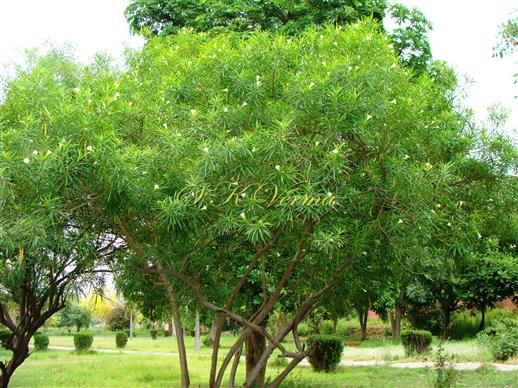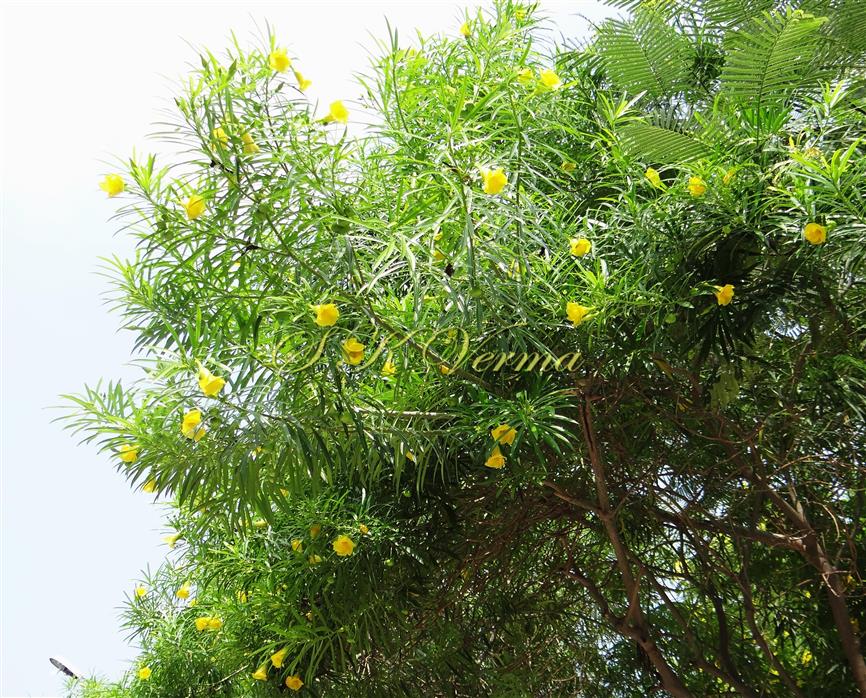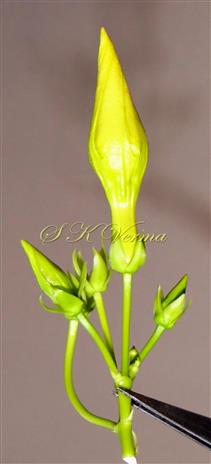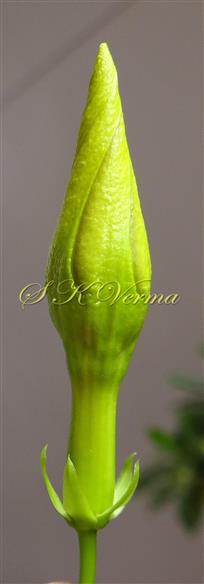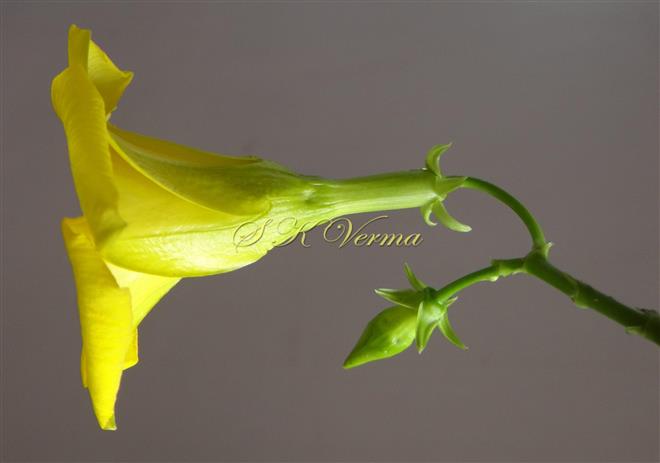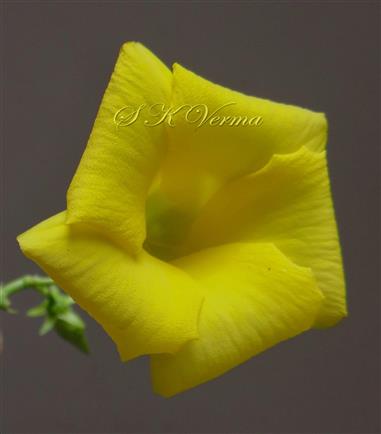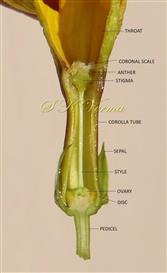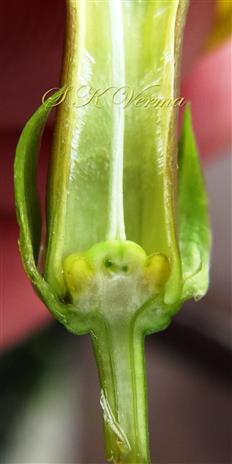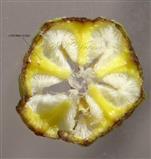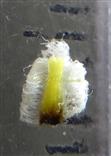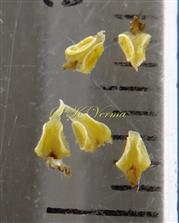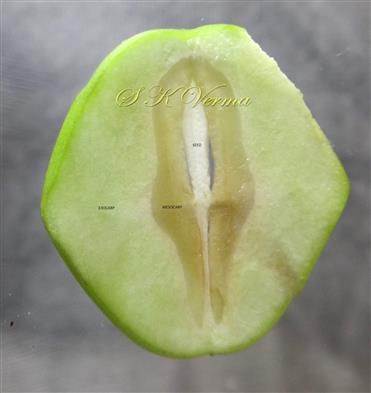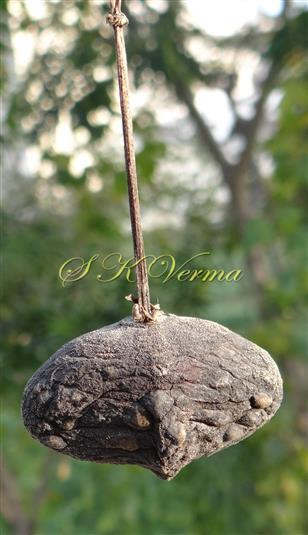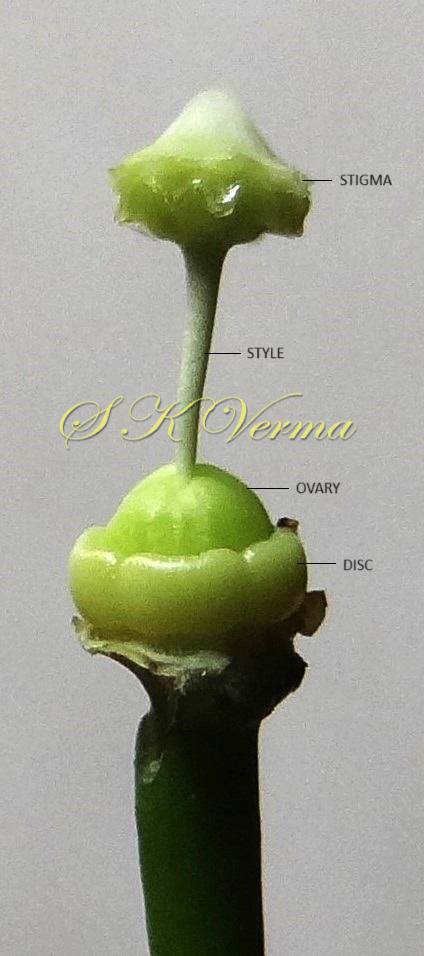CASCABELLA
Cascabela
Raf., Sylva Tellur. 162. 1838.
Shrubs or small trees with white latex. Leaves alternate, coriaceous, mostly with scale-shaped glands at the base of the petiole. Inflorescence usually a few-flowered cyme or apparently racemose, the flowers cream-yellow. Sepals 5, free or nearly so. Corolla tubular-campanulate to hippocrateriform, lobes 5, overlapping. Stamens 5; anthers free from pistil head. Carpels 2, syncarpous; ovary 1, 2-locular. Fruit drupaceous, black, with 1-4 large oblong seeds, fleshy exocarp fleshy and mesocarp bony.
6 species
Cascabela thevetia
Cascabela thevetia
(L.) Lippold, Feddes Repert. 91: 52. 1980; Cascabela peruviana (Pers.) Raf., Sylvia Tellur. 162. 1838; Thevetia peruviana (Pers.) Schum., Nat. Pflanzenfam. 4(2): 145. 1895; Bor & Raizada, Beaut. Ind. Climb. Shr. 193. 1954; Woodson & Schery, Ann. Miss. Bot. Gard. 57: 88. 1970; Fl. China @ eFloras.org 16: 164; T. neeriifolia Juss. ex. Steud, Nom. ed. 2, II. 680. 1841; Parker, For. Fl. Punj. 326-27. 1918 (Reprint 1973); Cerbera linearifolia Stokes, Bot. Mat. Med. 1: 490. 1812; C. peruviana Pers., Syn. Pl. 1: 267. 1805; C. thevetia L. Sp. P. 209. 1753.
A large evergreen glabrous shrub or small tree, 4.5-6 m high and ca. 15 cm in diameter. Juice milky, poisonous; bark chocolate brown, lenticellate, lower branches pendulous, young branches greenish-grey. Leaves spirally arranged, 8-15 cm x 6-12 mm, crowded, linear, narrowed at both ends, bright green and shining above, margins slightly recurved, apex acute to shortly acuminate, attenuate at base. Flowers bisexual, actinomorphic, 5-merous, hypogynous, fragrant, ca. 6 cm long and ca. 5 cm across, yellow or orange in few-flowered cymes. Peduncles usually very short ca. 5 mm long; pedicels 1.5-3.5 cm long; bracts variable, ca. 5 mm long, caducous. Calyx 6-11 mm long, divided almost to the base; lobes 5, narrowly triangular, acute or acuminate, persistent and spreading in fruit, reflexes when fruit is ripe. Corolla 6-7 cm x 4.5-5.5 cm, tubular at base; tube 1.2-1.5 cm long, hairy inside, throat campanulate; limb plicate, lobes 5, overlapping to left in bud, lobes obliquely obovate. Corona in throat of corolla, of 5 scales arching over stamens, corona scales connected by a transverse row of long white hairs. Stamens 5, inserted at the base of corolla throat; anthers incumbent on the stigma. Disc thick, cup-shaped, below the ovary, accrescent in fruit. Carpels 2, syncarpous; ovary one, superior, 2-locular, 2 ovules per loculus, placentation axile; styles one, ca. 1.5 cm long; stigma broad, conical angular. Fruit broadly obovate, 2-3 cm long, elliptic in horizontal cross section, 2.5-4.0 cm broad, exocarp fleshy black when ripe, mesocarp bony, longitudinally and transversely divided, endocarp thin and corky. Seeds 4 or fewer by suppression, light grey, lenticular, ca. 2 mm x 3.5 mm.
Common Names: Zard Ganira, Mexican Oleander, Yellow Oleander, Lucky Nut; Peeli Kaner (Hindi)
